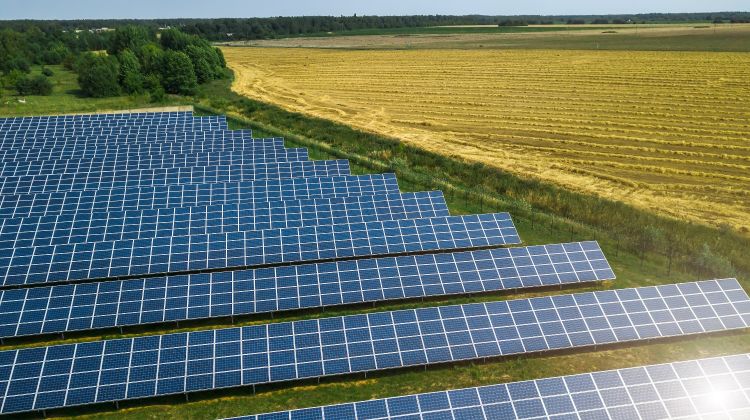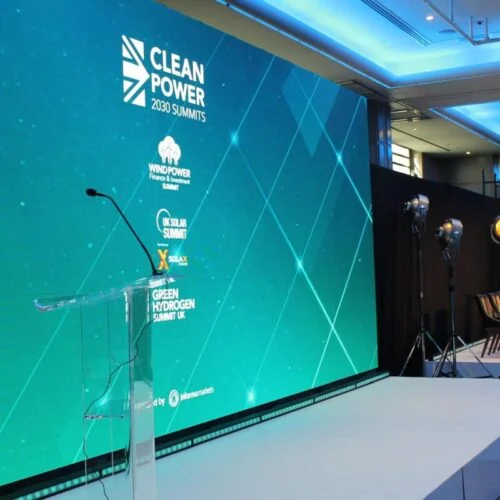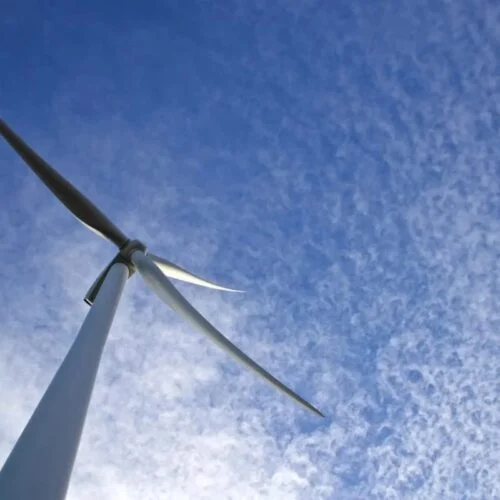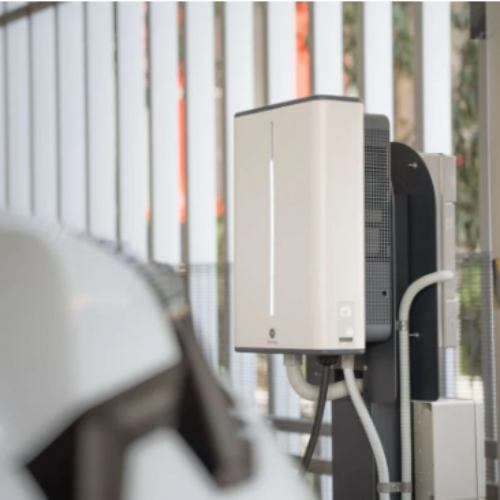The International Energy Agency (IEA) has released a new report revealing that 50% more renewable capacity was added globally in 2023 than in 2022, but financing remains an issue.
As the globe hurtles towards impending net zero targets – and with the recently signed pledge by 118 countries to triple renewables by 2030 at the recent COP28 summit in Dubai – the recent release of the IEA’s Renewables 2023 report will be welcome. But the publication does include some key challenges that must be addressed to bolster net zero efforts.
Crucially, the standout figure from this year’s document is that global annual renewable capacity additions increased to 510GW in 2023. This represents the fastest growth rate that has been witnessed in the past two decades.
Now this should serve as huge praise to all throughout the global renewable value chain who have worked tirelessly to bolster the energy transition and maintain the Paris Agreement’s legislation to keep global warming increase well below 2°C with a target to limit it to 1.5°C.
Turning our attention to GB, the nation has seen its renewable capacity bolstered significantly over the past year and saw various wind generation records broken. The result saw low-carbon energy sources contribute 51% of the electricity used by Britain with fossil fuels having made up 33% of GBs electricity mix across 2023. Carbon Brief attributed the decline of fossil fuels to two factors: renewables increasing sixfold (by 113TWh) from 2008, and reduced electricity demand, which decreased by 21% (83TWh) since 2008.
Of the renewable energy sources added, solar PV accounted for three-quarters of additions worldwide with China being where the largest growth occurred. For readers wanting to learn more about solar across 2023, our sister site PV-Tech provided its own analysis to the IEA report.
China also saw huge growth in its wind sector with additions having risen by 66% year-on-year. This staggering total has seen the nation become the largest developer of wind in the world, something that could come as a blow to the UK with its offshore wind pipeline having dropped below China over the course of 2023.
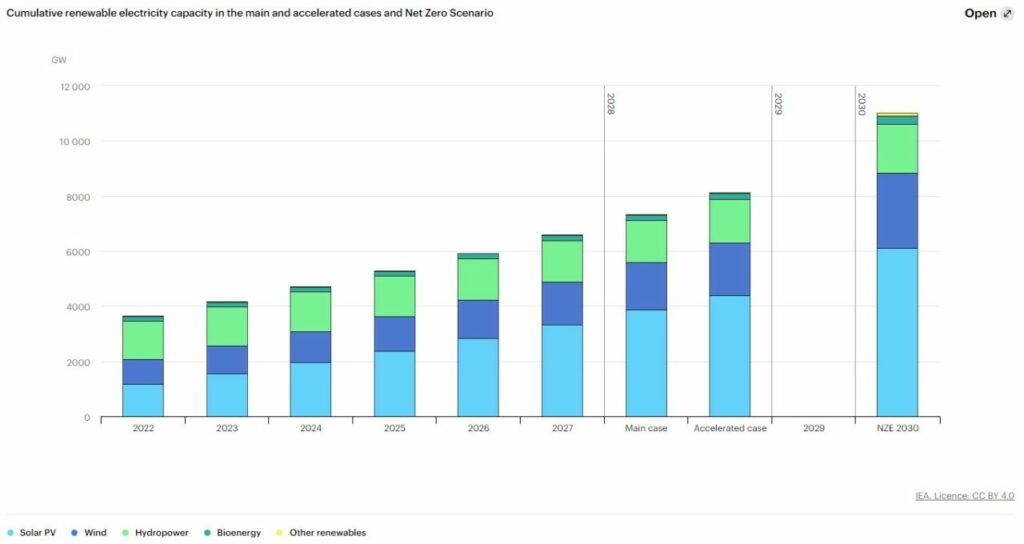
Casting its eye to the future, the IEA report outlined that “under existing policies and market conditions, global renewable power capacity is now expected to grow to 7,300GW over the 2023-28 period covered by the forecast”.
Although this is generally positive in the global energy transition, more needs to be done in order to achieve the tripling of renewable capacity target. “However, solutions to boost renewable deployment across the globe must be developed on a case-by-case basis, rather than a ‘one size fits all’ approach”
Overall, however, the IEA does single out that “more rapid policy implementation drives renewable power capacity growth 21% higher than in the main forecast, which would push the world towards being on track to meet the global tripling pledge.” This of course is relevant to the UK transition with the government having made several rollbacks on renewable targets in recent months as well as campaigning for annual North Sea oil and gas auctions.
By implementing policy at a faster rate, the IEA forecasts that government could close the gap to reach over 11,000GW in renewable capacity by 2030.
The need to support emerging and developing economies
Another crucial aspect of the IEA report is its view into the global race to net zero. As referenced by the organisation, G20 countries account for almost 90% of global renewable power capacity today meaning that much must be done to support emerging and developing economies and countries as they transition away fossil fuels.
In what the IEA is referring to as its “accelerated case”, it finds that the enhanced implementation of existing policies and targets could help G20 countries triple their collective capacity by 2030. Doing so then presents an opportunity to turn their attention to non-G20 nations and support them in their own energy transition.
To achieve the global goal, the “rate of new installations needs to accelerate in other countries, too, including many emerging and developing economies outside the G20, some of which do not have renewable targets and/or supportive policies”, the IEA highlighted.
An eye to the future
The IEA referenced various major milestones that could be achieved by 2028. Firstly, should the current trajectory continue at its rate, the globe could well bring online more renewable capacity between 2023 and 2028 than has been installed since the first commercial renewable power plant was built more than 100 years ago.
Indeed, this showcases the opportunity and collective movement to ensure net zero targets are met. However, this may not be enough. As mentioned previously, more time and resources must be allocated to support developing countries in their own net zero journeys to ensure that the Paris Agreement targets are met and maintained.
Other key milestones include:
- In 2024, wind and solar PV together generate more electricity than hydropower.
- In 2025, renewables surpass coal to become the largest source of electricity generation.
- Wind and solar PV each surpass nuclear electricity generation in 2025 and 2026 respectively.
- In 2028, renewable energy sources account for over 42% of global electricity generation, with the share of wind and solar PV doubling to 25%.
With the push to bolster renewable generation capacity expected to ramp up further into the decade, it will be interesting to see how the UK government manages its expectations and is able to take a global leadership role in the fight for net zero.
